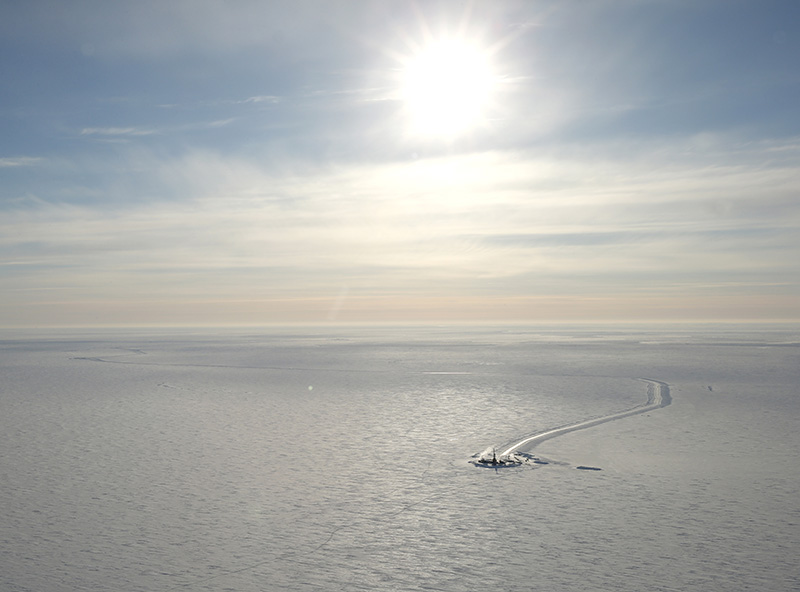(Bloomberg) -- Alaska’s oil reserves may have just gotten 80% bigger after Dallas-based Caelus Energy LLC announced the discovery of 6 billion barrels under Arctic waters.
The light-oil reserves were found in the company’s Smith Bay leases between Prudhoe Bay and Barrow along the Arctic shore, according to a statement from Caelus on Tuesday. As much as 40% of the find, or 2.4 billion barrels, is estimated as recoverable, the company said. That compares with the state’s proved reserves of 2.86 billion barrels in 2014, almost 8% of the U.S. total, Energy Department data show.
“It’s a really exciting discovery for us, and we think it’s really exciting for the state of Alaska,” Caelus Chief Executive Officer Jim Musselman said in a phone interview. “They need a shot in the arm now.”
Alaska’s oil output has been gradually declining, to 483,000 barrels a day last year from a peak of more than 2 million barrels a day in 1988, Energy Department data show. The last major field brought online was Alpine in 2000, which averaged 62,000 barrels a day in September, Alaska Department of Revenue data show.
Musselman, the man who engineered the $3.2 billion sale of Triton Energy Ltd. to Hess Corp. in 2001, founded Caelus in 2011 to explore and develop petroleum resources on the North Slope. In 2014, the company formed a partnership with affiliates of Apollo Global Management LLC to invest in oil and gas properties in Alaska.
Project’s Cost
The development will cost between $8 billion and $10 billion over the life of the project, which could be brought into operation by the fall of 2022, Musselman said. Located about 125 miles from any other facilities, the company will need to build pipelines and roads. An oil price of about $65 a barrel and greater certainty on state tax policy and incentives is needed to develop the field, he said.
“A lot of the investment decision is going to revolve around what happens within the state from a regulatory standpoint,” he said.
Caelus said its newly discovered field could produce as much as 200,000 barrels a day.
The discovery of light oil was made after seismic data was collected and two wells were drilled this year, the company said. Another well will be drilled in early 2018, Casey Sullivan, a company spokesman, said in a phone interview. The discovery would be the biggest in four decades, the company said. Prudhoe Bay, the state’s biggest field, was discovered in 1967.
Oil Rout
The fall in oil prices to a 12-year low of $26 a barrel in February from almost $108 a barrel in 2014 prompted companies including Royal Dutch Shell Plc and ConocoPhillips to withdraw from expensive and risky Arctic operations. Shell ended a nearly $8 billion quest to drill for crude in the Chukchi Sea after disappointing test well results. ConocoPhillips formally relinquished its 61 Chukchi Sea leases in April.
The pre-tax cost to produce crude on the North Slope and transport it to market is about $40 a barrel on average, Sarah Erkmann, external affairs manager at the Alaska Oil and Gas Association, said in a phone interview. Oil futures closed at a three-month high of $49.83 a barrel on Wednesday in New York. They’re still at less then half their peak level in 2014.
Alaska North Slope oil production averaged about 475,000 barrels a day last month, down from roughly 494,000 a year earlier, according to Alaska Department of Revenue data.
Bloomberg News by Robert Tuttle





